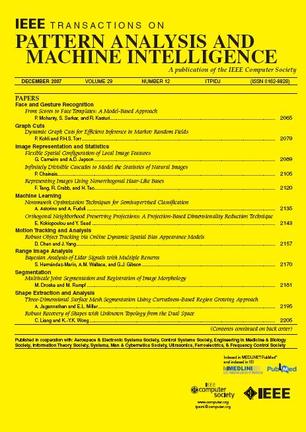Fine Detailed Texture Learning for 3D Meshes with Generative Models
IF 20.8
1区 计算机科学
Q1 COMPUTER SCIENCE, ARTIFICIAL INTELLIGENCE
IEEE Transactions on Pattern Analysis and Machine Intelligence
Pub Date : 2022-03-17
DOI:10.48550/arXiv.2203.09362
引用次数: 7
Abstract
This paper presents a method to achieve fine detailed texture learning for 3D models that are reconstructed from both multi-view and single-view images. The framework is posed as an adaptation problem and is done progressively where in the first stage, we focus on learning accurate geometry, whereas in the second stage, we focus on learning the texture with a generative adversarial network. The contributions of the paper are in the generative learning pipeline where we propose two improvements. First, since the learned textures should be spatially aligned, we propose an attention mechanism that relies on the learnable positions of pixels. Secondly, since discriminator receives aligned texture maps, we augment its input with a learnable embedding which improves the feedback to the generator. We achieve significant improvements on multi-view sequences from Tripod dataset as well as on single-view image datasets, Pascal 3D+ and CUB. We demonstrate that our method achieves superior 3D textured models compared to the previous works. Please visit our web-page for 3D visuals.: https://research.nvidia.com/labs/adlr/textured-3d-learning.精细纹理学习与生成模型的3D网格
本文提出了一种对从多视图和单视图图像重建的三维模型实现精细纹理学习的方法。该框架被提出为一个适应问题,并逐步完成,在第一阶段,我们专注于学习精确的几何,而在第二阶段,我们侧重于使用生成对抗性网络学习纹理。本文的贡献是在生成学习管道中,我们提出了两个改进。首先,由于学习的纹理应该在空间上对齐,我们提出了一种依赖于像素的可学习位置的注意力机制。其次,由于鉴别器接收对齐的纹理图,我们用可学习嵌入来增加其输入,这改进了对生成器的反馈。我们对Tripod数据集的多视图序列以及单视图图像数据集Pascal 3D+和CUB进行了显著改进。我们证明,与之前的工作相比,我们的方法实现了卓越的3D纹理模型。请访问我们的网页获取3D视觉效果。:https://research.nvidia.com/labs/adlr/textured-3d-learning.
本文章由计算机程序翻译,如有差异,请以英文原文为准。
求助全文
约1分钟内获得全文
求助全文
来源期刊
CiteScore
28.40
自引率
3.00%
发文量
885
审稿时长
8.5 months
期刊介绍:
The IEEE Transactions on Pattern Analysis and Machine Intelligence publishes articles on all traditional areas of computer vision and image understanding, all traditional areas of pattern analysis and recognition, and selected areas of machine intelligence, with a particular emphasis on machine learning for pattern analysis. Areas such as techniques for visual search, document and handwriting analysis, medical image analysis, video and image sequence analysis, content-based retrieval of image and video, face and gesture recognition and relevant specialized hardware and/or software architectures are also covered.

 求助内容:
求助内容: 应助结果提醒方式:
应助结果提醒方式:


